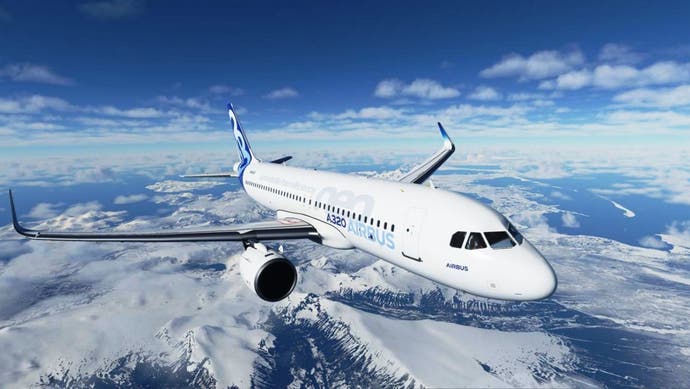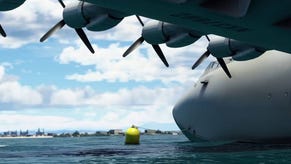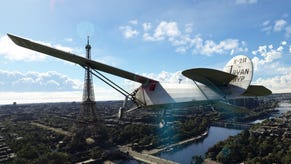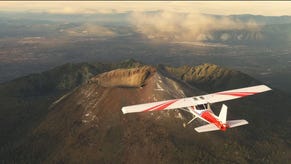If you're playing Flight Sim, you must read Skyfaring
DECIDE.
When Antoine de Saint-Exupéry was first asked to fly the mail from Alicante to Casablanca, he asked another pilot, Guillaumet, to talk him through the terrain in advance. This was 1926 and aviation was a somewhat magical business. "Guillaumet didn't teach me about Spain," Saint-Exupéry later wrote, "he made Spain my friend. He didn't talk about hydrography, or population figures, or livestock. Instead, when talking about Guadix, he spoke of three orange trees at the edge of a field."
The world looks very different from the air. Different priorities and different readings emerge. Three orange trees can take on supreme importance. "Little by little," Saint-Exupéry concludes, "the Spain on my map became a fairytale landscape."
Saint-Exupéry went on to write an actual fairytale, of course, and The Little Prince is a book in which the thrum of early aviation is always present, a constant warm purring at the threshold of hearing. But in Wind, Sand and Stars, the memoir in which he describes his work on the mail route, he goes on to suggest that, in the decades since those early rattling adventures, something has been lost. Wind, Sand and Stars was written only 13 years after his Spanish gig, and yet: "Today...the pilot, the engineer and the radio operator aren't embarking on an adventure...but shutting themselves in a laboratory. They respond to instrument needles, not the unfolding of a landscape."
I re-read this passage recently and thought: that's lovely writing, and I love the clipped, aristocratic certainty of it, but is he correct? Flight may have moved beyond the days that Saint-Exupéry is so brilliant at describing, when a navigator would often stick his head out of the window when flying - I forget what they would be checking; I'm sure they had their reasons - but flight is still a thing of fairytales and wonder. Something strange happens to us when we're up there in the clouds. Seatback movies make us more emotional. The landscape below exerts a sweetly mechancolic strain of hypnotic power. Flying transports us across the world but it also shifts us inwards: consciousness seems to retreat into a special secret compartment in the warm, snoozing depths of our minds, a place of duvets and pillows and surprisingly chunky thoughts. We all become lyrical. We all become poets.
If you want to see proof of this, the release of Flight Sim is a perfect example. Flight Sim is probably the greatest act of corporate poetry in recent years, all of this released by a company, Microsoft, that is not known for its twilight musings and widow's walks. (I suppose TS Eliot was a banker.) Even so, people load it up and are transformed. They are unable to adequately describe what it's like up there above the clouds, but they want to try anyway. Their eyes take on a subtle glaze. Maybe a slight welling. I've seen it again and again. (Also, they go and look for their own street.)
In a way, I was prepared for this. One of my favourite books is Skyfaring: A Journey with a Pilot. It's written by Mark Vanhoenacker, who used to fly the 747 - the greatest plane in the world, the Queen of the Skies - for British Airways and now, I think, flies the Dreamliner. Skyfaring is one of those special books in which someone is sharing an enthusiasm, but with such generosity and easy expertise, such poise and such delicacy that it swiftly becomes the reader's enthusiasm too. Skyfaring proves that to be a pilot is also to be a poet. The laboratory of the modern aircraft is not entirely cut off from the humanities department. I think Skyfaring truly gets at the magic of flight and - by extension - the magic of Flight Sim. It's worth thinking about I reckon.
I first read Skyfaring in near perfect conditions. I wasn't on a plane - until I read Skyfaring, and this is by no means a medical endorsement but it sure worked for me, I was a very nervous flier - yet I was somewhere that turned out to be surprisingly similar. I was in the neurology ward of a sleepy Sussex hospital where I was having a week's treatment for multiple sclerosis. That same sense of suspension, of being at one remove from normal life. There were a few of us in that ward, all men, all drifting in and out across the course of a day, staring, thinking, dozing, sometimes trying to read. I had a bunch of books but the one I remember most clearly was Skyfaring. It's not that it got me out of the hospital, it's that it brought the beautiful blue heavens and everything in them into the ward for me.
I have never read a book quite like this. It drifts, and I mean that in the most positive sense imaginable: the arcing drift of a wing, of a car oozing around a corner in IMAX slow-mo, lights leaving trails in their wake. It tackles different elements of flight and a pilot's life, but it suggests, more than anything, I think, that to fly is to give part of your mind - safely! - over to dreaming. At the start of the book, Vanhoenacker is emerging from his bunk on a long flight. "I now associate going to work with dreaming," he later writes. "Or at least, with dreams recalled only because I am in the sky." Proust has entered the cockpit.
Like Flight Sim, Skyfaring gives you the world. Vanhoenacker travels back and forth across the globe and every time I read his book I want to get out more. A night landing in Los Angeles, the most beautiful of cities and the most beautiful of city approaches. A trek in Africa. A straight line from London to Tokyo - you take off and just point the nose to Japan! Vanhoenacker talks of Place-Lag, a geographical condition that comes from moving so far and so swiftly that the mind struggles. (William Gibson has something similar in Pattern Recognition - planes fly so fast the soul is left behind and must be reeled back into the body for a few days after landing.) The entire book takes place in that wonderful Valium haze that surrounds travel and hotels and waking up at odd hours and staring at foreign objects with a strange kind of commitment and wondering, delightedly, what they do.
Like Flight Sim, Vanhoenacker's book is an education. I learned about knots and nautical miles - even in my hospital stupor I diligently marked the page in case this info should ever come in handy - and I learned about the often playful names of radio beacons. I learned that the Boeing 747 speaks to the pilots every now and then and tells them to "DECIDE". I learned, and I was very moved to learn, about sky burial.
Ever since my hospital trip I have never been able to re-read Skyfaring from cover to cover, although it has become one of those special books I am never not reading, if you know what I mean. I don't go from A to B with it because I don't want to break the spell of that first perfect flight. Instead I slip back and forth, a page here, a chapter there, swept along by Vanhoenacker's easy poetry - in the '20s this sort of thing was called Skymindedness, which is an enviable sort of word - and by the deft structure of this book, this tacking to and fro, that I can sense but never quite understand. Like pilots, like planes, like Flight Sim with the entire world in 80 GB, I don't know how Vanhoenacker does it.
But re-reading parts of Skyfaring recently I was struck by at least one of the reasons why the world of flight and the world of video games like Flight Sim converge so harmoniously. It's not just the poetry of both, the sheer thrill of movement, but something else.
"The most curious aspect of the pilot's life may not be that we work in the air," Vanhoenacker writes in one of my favourite passages. "It is that our world on the ground - the realm of places we know well, and that we connect to other places, the world that for a child begins with the rooms at home, and then expands to the garden, and to the local area - is so enormous." That is video games right there - all those temples and corridors and desert islands, all those space ports and dungeons, jostling to connect in the mind.
And this. Occasionally with a book you find the one sentence in it that sums almost everything up, the tone, the philosophy, the viewpoint. "It is a joy of my job that I am occasionally tasked with drawing the winds," Vanhoenacker writes in a chapter named Air. Those of us that play games - not just Flight Sim - can probably understand what that is like too.












